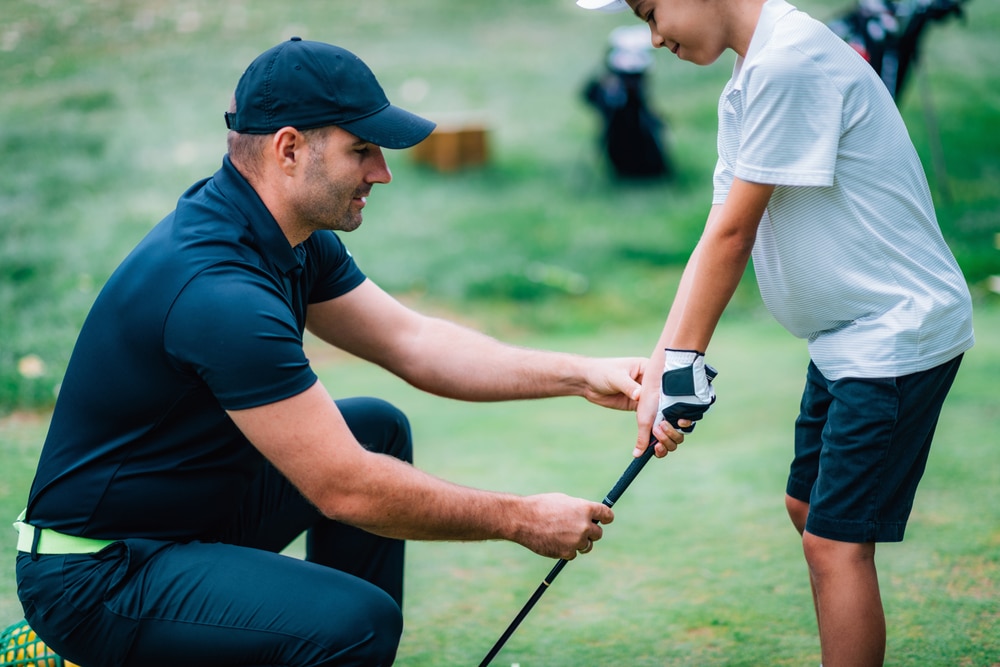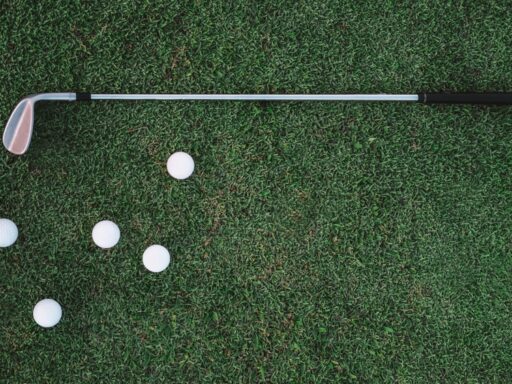
Stop right here if you want to master your golf swing like a pro. As much as golf demands physical exertion and strategy, it is obvious why you need to have a premium-quality golf club to master your grip of golf. Golfers can improve their performance to an unmatched level on the course if they practice gripping the club. So, in this article guide, we are here with 7 of the easy ways you can consistently practice becoming a pro at this strategic game.
Different Types of Golf Grips

Now that we have discussed the benefits of midsize golf grips, it’s important to comprehend the types of golf grips before we get into how to improve your grip. Depending on the player’s hand size, strength, and inclination, each provides a set of benefits and is appropriate for a particular group of players.
Vardon Grip (Overlap Grip)
The pro’s choice! Gives you that perfect mix of control and power with a hint of classic style.
- The lead hand’s index finger overlaps the trailing hand’s pinky.
- Great for larger hands.
- Balances power and precision like a champ.
Interlocking Grip
Tight and steady—this grip is all about control and confidence for smaller hands or those needing extra hold.
- Pinky and index fingers lock together.
- Super secure for smaller hands.
- Trusted by big names like Nicklaus and Woods!
Baseball Grip (Ten-Finger Grip)
A throwback to backyard baseball, this grip feels natural and gives a power boost for beginners or those needing comfort.
- All ten fingers on the club.
- Great for beginners and arthritis-friendly.
- Packs a punch, but watch that control.
However, if you want to know about these grips in detail, along with their pros and cons, it’s best that you check out this article for in depth information.
7 Methods to Perfect Your Golf Grip

Here are some ways through which you can significantly improve your golf grip and be a pro at this game.
Start with a Neutral Grip
A neutral grip keeps the clubface square at impact—perfect for straighter shots! Form a “V” between your thumb and index finger that points to your right shoulder (for right-handers).
- Place the club in the left hand, thumb down the shaft.
- Right hand beneath left, thumb over the left thumb.
- Try neutral before exploring midsize, jumbo, or larger grips.
Check the Grip Pressure
Firm, not tense! Think of holding a toothpaste tube—enough control without squeezing out the paste.
- Too tight adds tension; too loose, one loses control.
- Aim for balanced pressure to benefit from different grips.
If you want details on appropriate golf pressure, do check out this article.
Position Hands Right
Align those hands! Keeping thumb and index creases matched up helps maintain a square clubface.
- Check alignment often until it feels natural.
- Both hands should work in sync.
Focus on Finger Placement
Grip in your fingers—not the palm—for control and flexion in the lead hand.
- Place club in the fingers of the lead hand.
- Let the thumb nest comfortably over the trailing hand’s lifeline.
Use Training Tools and Grip Aids
Grip aids like alignment markers, and molded grips can make a big difference!
- Tools offer tactile feedback for positioning.
- Experiment with grip weights to balance your swing.
Seek Expert Advice
A pro can spot grip weaknesses and offer customized guidance to improve your swing.
- Professionals provide small, game-changing adjustments.
- Regular feedback helps build strong habits.
Practice, Practice, Practice
Grip improvement takes dedication! Add grip drills in each session.
- Start with wedges, then move up to longer clubs.
- Experiment with putter grips, larger grips, and midsize options for refined control.
Benefits of a Strong Golf Grip

Let’s face it: the cornerstone of a strong golf swing is a solid grip. It affects everything, including your overall control and consistency and the direction and distance of your shots. Here are a few main advantages of using the right golf grip:
- Enhanced Accuracy: A firm grip keeps the clubface square, resulting in straighter strokes.
- Increased Distance: Refining your grip boosts swing speed, leading to more distance.
- Better Control: A solid grip allows for a greater range of shots and precision.
- Consistency: A consistent grip helps establish a repeatable and reliable swing.
- Reduced Injury Risk: A proper grip reduces strain and minimizes hand and wrist injuries.
- Increased Confidence: A strong grip enhances self-assurance, improving overall performance.
Conclusion
To sum up what has been discussed so far, the article covered ways to improve golf grip in detail. All it takes is patience and consistency to master this game and leave everyone in awe on the course. There are different types of golf grips, but you can master everyone if you follow our article guide, from practicing the neutral grip to using training tools. So, why wait when you can become a pro at no price?
Master the Grip!





